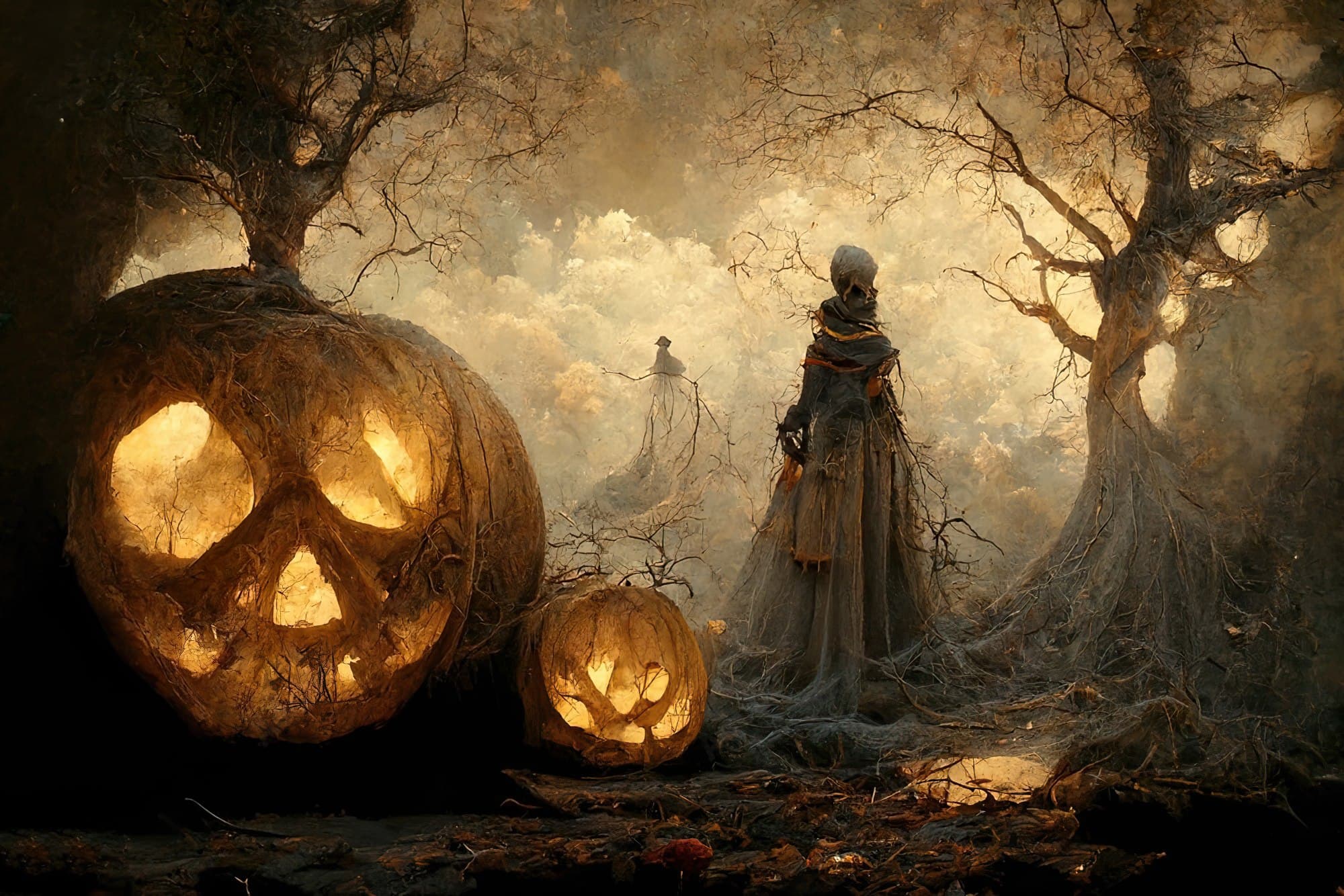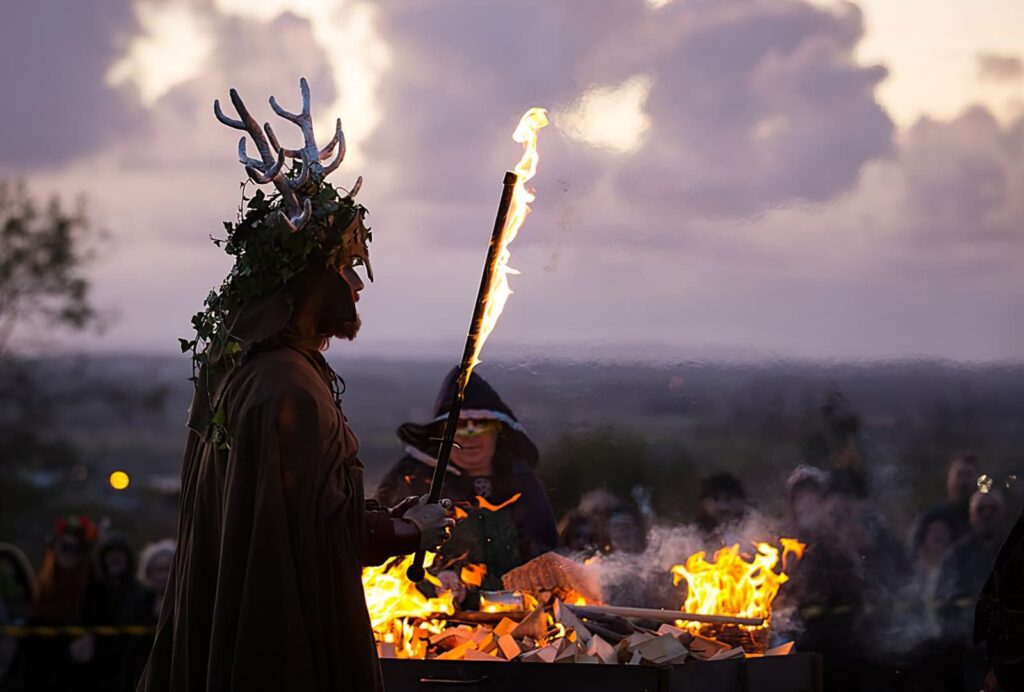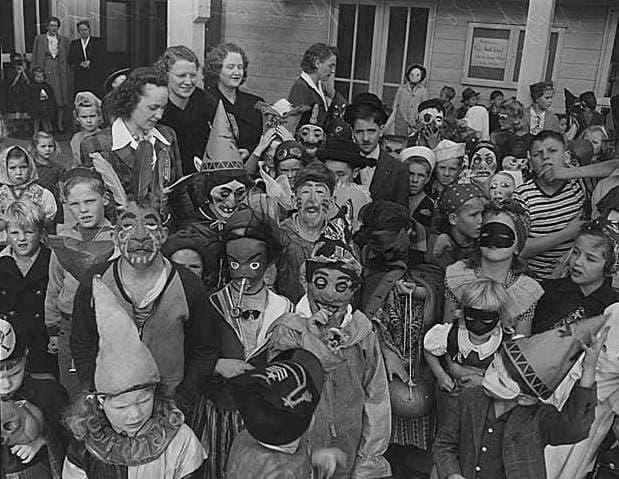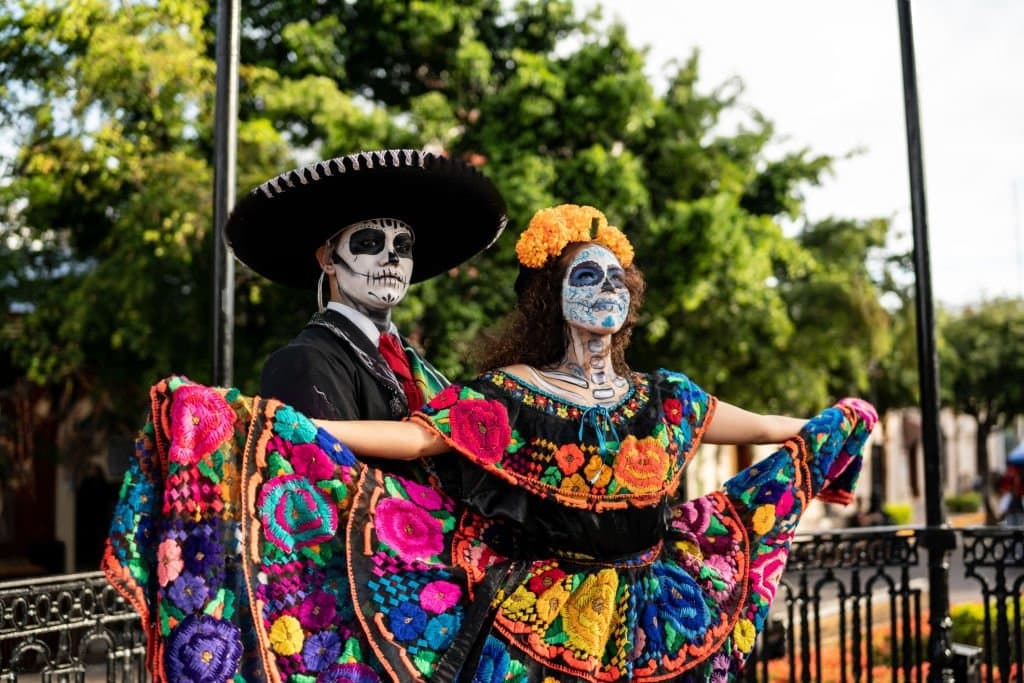
Unraveling the Spellbinding History of Halloween: From Ancient Roots to Modern Celebrations
Introduction
As Halloween approaches, with its familiar sights of carved pumpkins, spooky costumes, and trick-or-treaters, we can’t help but wonder about the roots of this frightful and fun celebration. In this blog post, we’ll embark on a thrilling journey to unveil the halloween dark history, delving deep into its ancient beginnings and exploring how it evolved into the much-loved event it is today. Get ready to discover the captivating tales, traditions, and transformations that shaped the Halloween we know and love.
Table of Contents
The Ancient Origin of Halloween
Samhain: The Ancient Celtic Festival that Started It All
Our story begins over 2,000 years ago with the ancient Celts, who inhabited what is now modern-day Ireland, the United Kingdom, and northern France. These people celebrated Samhain, a festival marking the end of the harvest season and the beginning of the darker, colder months of winter. Held on October 31st to November 1st, Samhain was a time when the boundary between the living and the dead was believed to blur, allowing spirits to cross over and roam the earth.
The Celts lit bonfires and wore costumes made from animal skins to ward off these spirits and protect themselves from any harm they might bring. Little did they know that this early tradition would later inspire the spooky costumes and eerie atmosphere we associate with Halloween definition today.

The Roman Influence on Halloween
As the Roman Empire expanded its reach, it eventually conquered the Celtic territories and brought with it its own customs and traditions. Two Roman festivals, in particular, played a role in shaping the Halloween we know today. Feralia, a day in late October, was dedicated to commemorating the deceased by making offerings and performing rituals.
Meanwhile, the festival of Pomona, the Roman goddess of fruit and trees, was celebrated around the same time. Pomona was often symbolized by an apple, which could explain the origin of the popular Halloween game of apple bobbing. These two Roman festivals merged with the Celtic festival of Samhain, gradually transforming its customs and paving the way for the future history of Halloween.

The Christian Influence on Origins of Halloween
All Saints’ Day and All Souls’ Day: The Christian Transformation of Halloween
As Christianity spread across the Celtic lands, the church sought to replace the pagan festival of Samhain with its own religious observances. In the 8th century, Pope Gregory III designated November 1st as All Saints’ Day, a time to honor all saints and martyrs. All Saints’ Day, also known as All Hallows, eventually led to the night before—October 31st—being dubbed All Hallows’ Eve, which later evolved into Halloween.
Soon after, the church established All Souls’ Day on November 2nd, a day to pray for and remember the deceased. These Christian holy days were celebrated with some similarities to Samhain, such as lighting bonfires and donning costumes, thereby further transforming the ancient pagan festival into the Halloween we recognize today.
From Souling and Guising to Trick-or-Treating: The Evolution of a Halloween Tradition
Before trick-or-treating became a staple of modern Halloween definition and celebrations, there were two similar customs practiced in the British Isles that laid the groundwork for this beloved activity: souling and guising. Souling was a medieval Christian practice that took place on All Souls’ Day. Poor people would go door-to-door, offering prayers for the dead in exchange for soul cakes, a type of pastry that was believed to represent a soul being released from purgatory. Guising, on the other hand, involved children dressing up in costumes and going from house to house, performing songs, dances, or plays in return for food, coins, or other small treats.
As immigrants brought these customs to America, they gradually merged and evolved into the trick-or-treating tradition we know today. By the early 20th century, children in the United States began going door-to-door in costumes, asking for treats like candy, coins, and small toys. The term “trick-or-treat” was first used in the 1920s, adding a playful element of mischief to the tradition, and it quickly became an integral part of the Halloween experience for generations to come.
Halloween’s Journey to America and Its Melting Pot of Traditions
When European immigrants, particularly the Irish, began arriving in America, they brought their Halloween customs with them. The diverse cultural backgrounds of the people settling in the United States led to a blending of various traditions and practices. For instance, the early American Halloween celebrations featured public events called “play parties,” where communities would gather to celebrate the harvest, share ghost stories, and indulge in fortune-telling games.
As more immigrants arrived, Halloween customs continued to evolve. The Irish tradition of carving turnips into lanterns was adapted to the more abundant American pumpkins, giving rise to the iconic jack-o’-lantern. By the late 19th century, Halloween festivities in America had started to become more community-centered, focused on parties and family-friendly entertainment, gradually shedding its darker, supernatural overtones.

The Commercialization of Halloween
The Commercialization and Modernization of Halloween
As Halloween meaning has spread and evolved over time, it has also become increasingly commercialized. In the United States, the holiday is now a multi-billion-dollar industry, with sales of costumes, decorations, candy, and other Halloween-related merchandise reaching record highs each year. This commercialization has undoubtedly played a role in shaping how the holiday is celebrated today, with many people investing significant time and resources into creating elaborate displays, parties, and events.
Despite the commercial aspect of Halloween, the core essence of the holiday has remained intact. People of all ages continue to embrace the traditions of dressing up in costumes, trick-or-treating, and sharing spooky stories. In addition, new customs have emerged as a result of technological advances and shifting cultural values.
For example, the rise of social media has led to an increased focus on sharing Halloween-themed content online, while concerns about environmental sustainability have inspired more eco-friendly approaches to decorating and costume creation. As Halloween continues to evolve, it remains a unique celebration that bridges the gap between ancient rituals and modern culture, allowing people from diverse backgrounds to connect and share in the spirit of mystery, creativity, and fun.
Halloween in the New World
Halloween’s Global Expansion and Cultural Adaptations
As Halloween continued to grow in popularity within the United States, its influence began to spread to other countries around the world. Today, many countries have adopted and adapted Halloween customs to fit their unique cultural context. For example, in Mexico and other Latin American countries, the holiday known as Día de los Muertos, or Day of the Dead, takes place on November 1st and 2nd. While this celebration has its own distinct origins and traditions, it shares some similarities with Halloween, such as honoring the deceased, using vibrant decorations like skulls and skeletons, and incorporating elements of costume and performance.
In other parts of the world, Halloween has become an opportunity for people to engage in playful escapism and revelry. In countries like Japan and South Korea, Halloween has grown in popularity in recent years, with costume parties, parades, and themed events taking place throughout October. Although the historical and cultural origins of Halloween may not be as deeply ingrained in these countries, the universal appeal of dressing up, embracing the mysterious, and enjoying a night of fun and fantasy has allowed the holiday to find its place within diverse societies around the globe.

Modern Halloween Traditions
Modern Halloween Traditions: A Colorful Mixture of Old and New
Today’s Halloween celebrations are a vibrant blend of time-honored customs and innovative new practices. Many traditional activities, such as carving jack-o’-lanterns, bobbing for apples, and telling ghost stories, continue to be popular with families and friends. Trick-or-treating remains a staple of the holiday for children, who eagerly dress up in costumes and visit their neighbors in search of candy and other treats.
In addition to these classic traditions, new Halloween customs have emerged in response to changing cultural landscapes and technological advancements. For example, immersive haunted attractions, ranging from professionally designed haunted houses to elaborately staged zombie experiences, have become increasingly popular with thrill-seekers. Likewise, themed parties and events, such as costume contests, pumpkin decorating workshops, and horror film festivals, provide a wealth of entertainment options for people of all ages.
The influence of digital technology has also transformed the way Halloween is celebrated, with people increasingly using social media platforms to share their costumes, decorations, and other spooky creations. Furthermore, the rising popularity of online streaming services has expanded access to horror films and television shows, allowing fans to enjoy Halloween-themed content throughout the entire month of October. As a result, the modern Halloween experience is a dynamic and ever-evolving fusion of traditions both old and new.
Conclusion: The Lasting Impact and Timeless Allure of Halloween
In conclusion, the captivating and enduring Origins of Halloween can be traced back to its ancient origins in Celtic and Christian traditions. Over the centuries, the holiday has evolved and adapted to different cultures and customs, giving rise to a rich tapestry of unique practices that are still celebrated today. As we continue to honor the age-old customs of Samhain, souling, and guising, we also embrace new traditions and experiences that reflect the ever-changing world in which we live.
Halloween remains a beloved and enchanting holiday, cherished by people of all ages for its imaginative escapism, creative self-expression, and communal spirit. By delving into the fascinating history of Halloween, and embracing the myriad ways in which it is celebrated, we can appreciate the timeless allure of this magical event and look forward to the countless new memories and experiences it will continue to inspire for generations to come.
Join the Horrifiq cult and never miss a scare!
Latest Halloween trends, goriest new items, Halloween sales, right in your inbox.